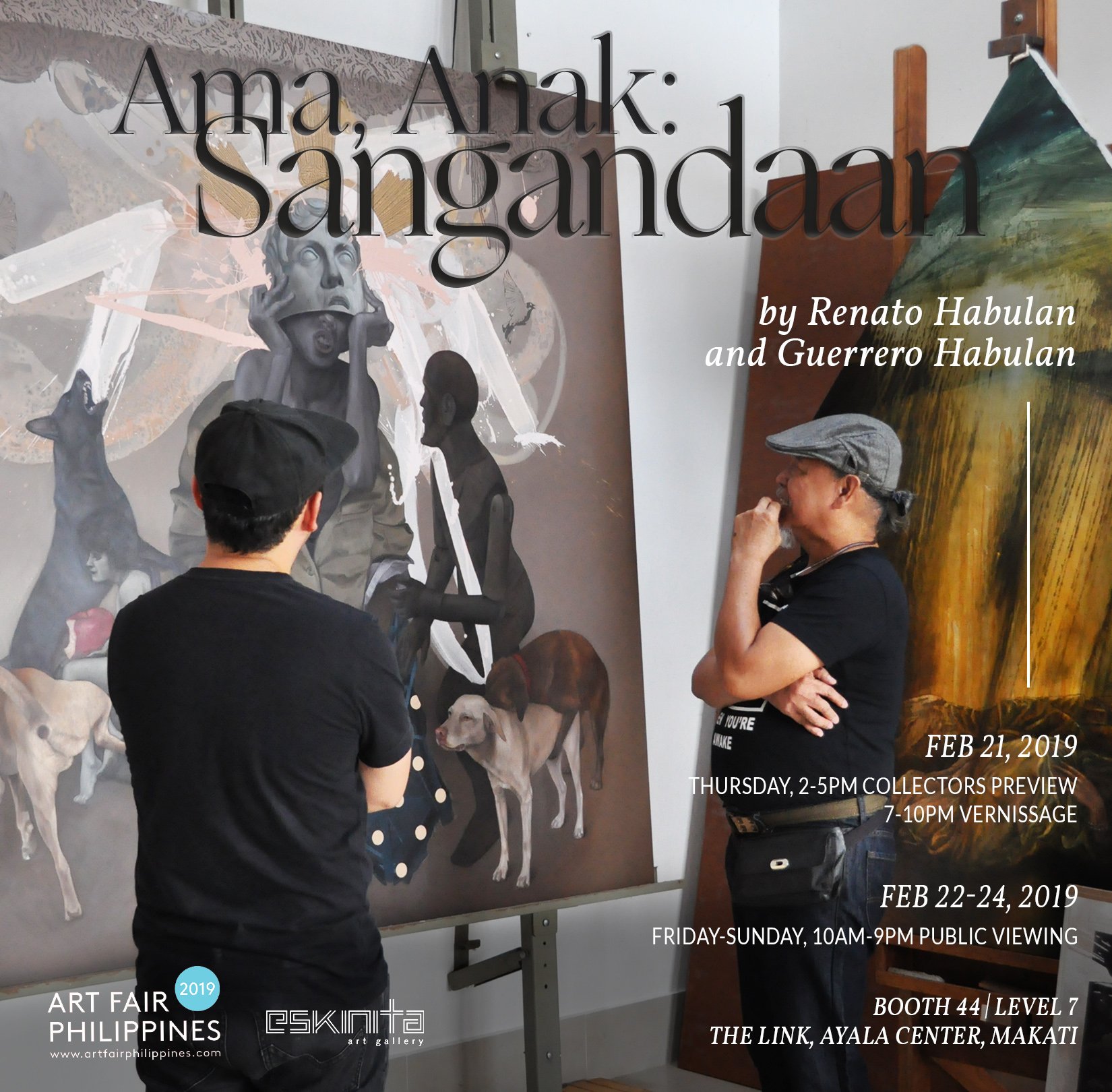
Ama, Anak: Sangandaan
Renato Habulan / Guerrero Habulan
Art Fair Philippines 2019 / February 21 to 24, 2019
The Intersection with the Periphery: Guerrero Habulan
Guerrero Habulan conveys a preservation of grandeur and the abundance of suspended moments that are rescued from human longing. Guerrero’s works are rooted from the visual memories of his childhood days and his family’s involvement in the festive religious practices ever since. He wasn’t aware of what was happening then, and why his father was documenting the entire festivity. But while of these are happening, he has been attentively watching and all those images got stuck in his head.
As a reflection of his father’s mentorship, Guerrero’s plight created an inventory of issues, societal struggles, inner conflicts, and personal demons. In a show entitled “Conjoint” he has exhibited various techniques to highlight the influences and tensions of his subjects in relation to the matter of power. The usage of pop culture and mass media sparks the curiosity about the seemingly secret message highlighted through this work and the transmitted peculiar influence on the subject.

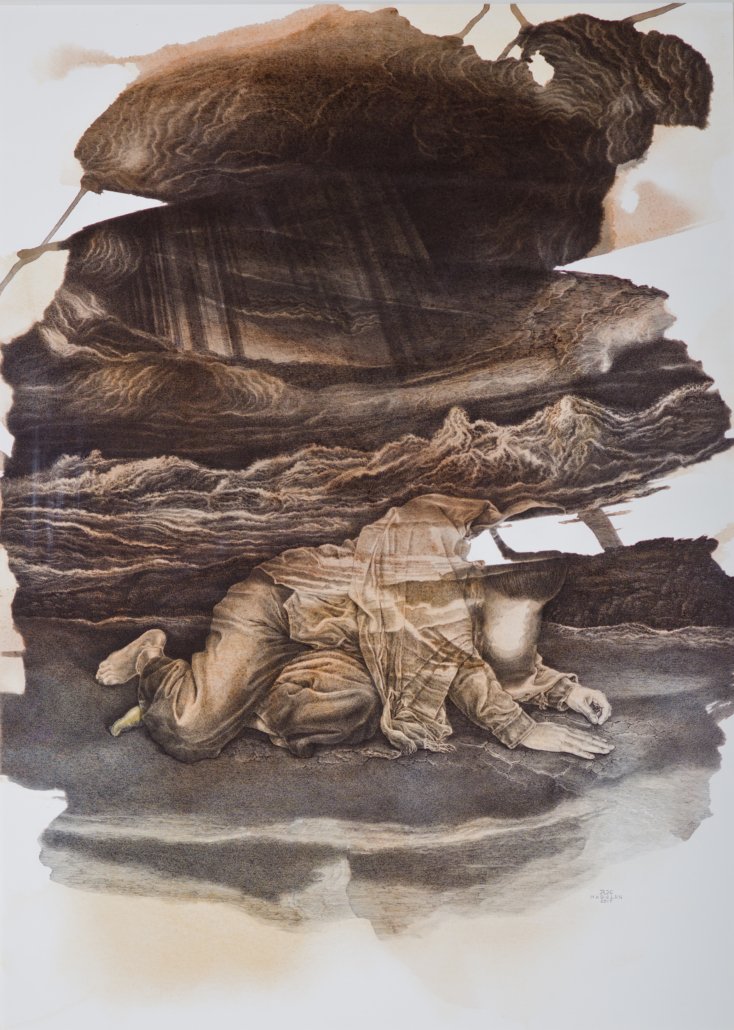
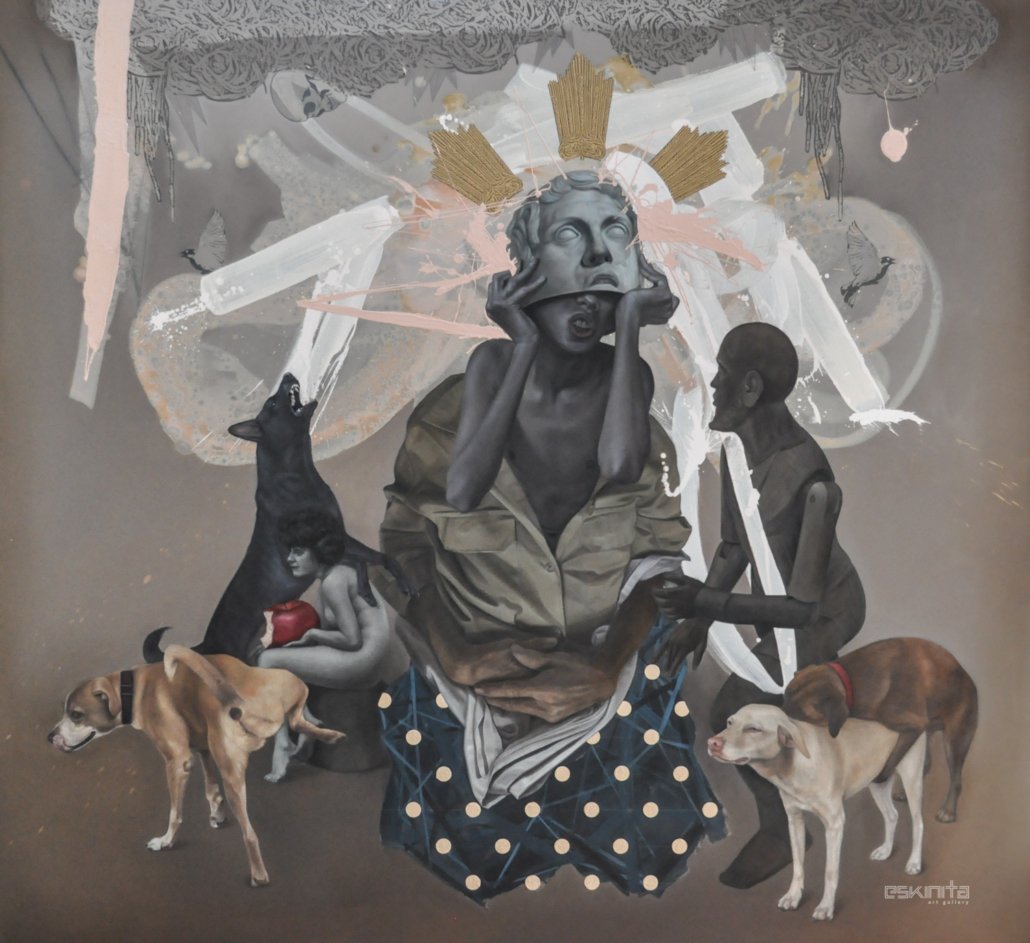

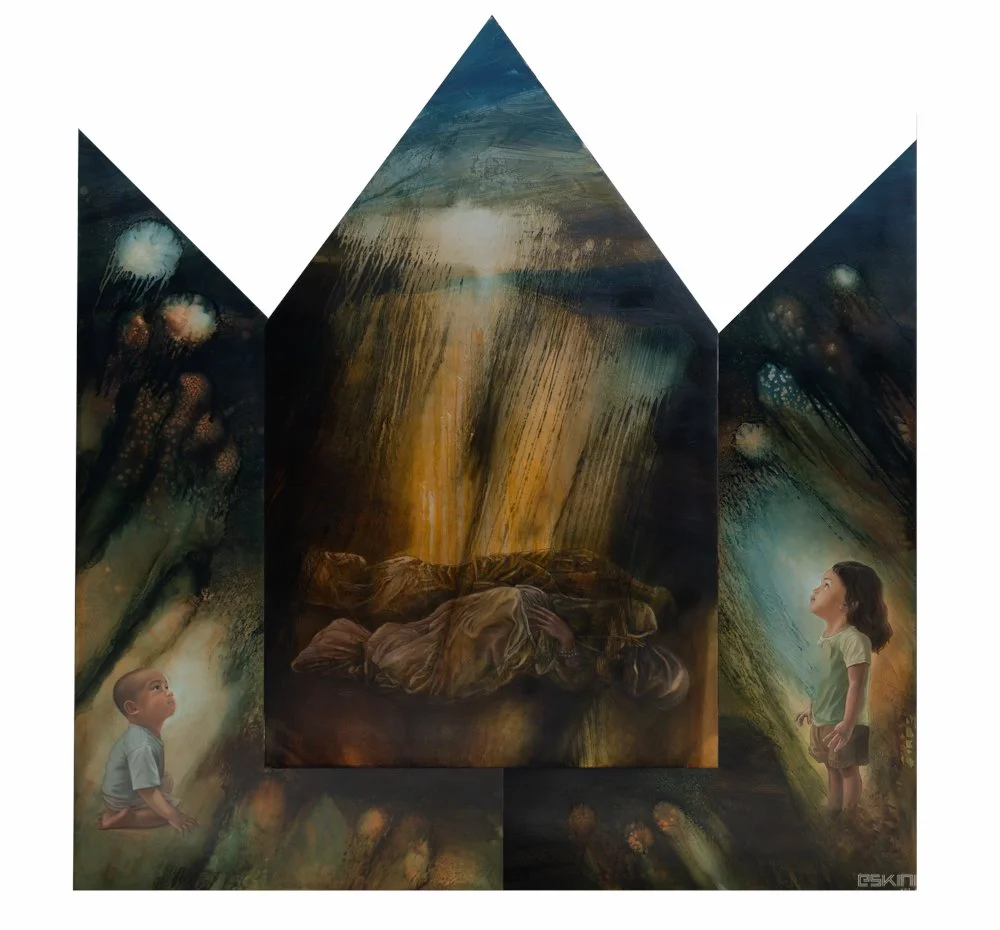
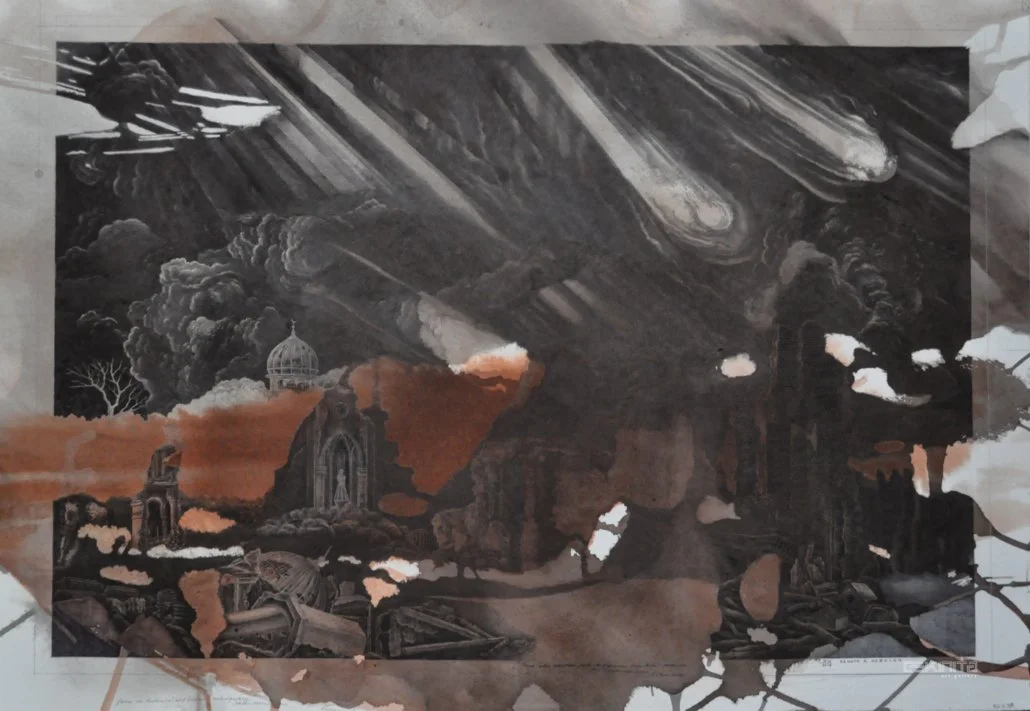
Sangandaan
“Sangandaan” is situated in the wake of dusk, and the plight of people subsequent to the time of violence. With the use of “Boceto #P.60,18 Alitaptap Series,” it has commenced that the exhibit portrays the ornamental manifestation of a system that partitions the dominant powers, and the oppressed. It unveils the killings not just of people but of beliefs, heritage, establishments, institutions and thus, of humanity.
A humanity destroyed through this chilling, and crippling effect also cause the disappearance of writers, of painters, of filmmakers, and of journalists. And with no one to present the truth, with no one to criticize and reflect the reality of this time, we will be inclined to accept the existing state routinely and blindly, so we ourselves sponsor the elimination of own humanity.
In Renato Habulan’s “Liwanag ng Alitaptap 1,” he offers a scenario where the young witnesses this very turmoil. This powerful focal point heartens a gripping effect to the audiences through the unmasking of a certain reality – a milieu of societal unrest that presents the danger of silencing the dreams of the youth. Manifested in different expressions such as vitality and excitement, the young also put emphasis on the movement and impetus as the solution – the faith to not be defeated by the mentality that there is nothing we can do. Here we see hope marked by gratitude and trust. A certain sense of indebtedness and an impetus to believe and trust that there is something more.
Renato Habulan intended to put forward our religious past and its beating heart. A disarming centerpiece entitled “Liwanag ng Alitaptap 2” represent the constant discredit to our faith, our core, or that which gives us resilience, making it difficult for people to retain hope in the face of suffering. He made use of the woman figure in his paintings to lead the mission to stand – a strategy to spearhead not by blood but with a guiding light, a movement to deport from former falsehoods through reaching towards the people around you. The virtue of engagement of human beings in their generosity, grace, and imagination is a language of love – the language of hope to overcome the past.
Guerrero Habulan on the other also raises awareness to a life we’re heedless of. The exhibit “Sangandaan” aims to bring forth two varying perspectives from a similar root. Using different figures of modernity, Guerrero operates with a humorous and whimsical approach to mask the goriness of violence and sin.
He deconstructed the memories he had as a kid and has made them the very foundation of his works. Back then, while the Senior Habulan was documenting seriousness of the festivities, Guerrero sees the environment and what was happening in the peripheries. There he sees that amidst the solemnity, there is chaos and detachment. This explains why he has been fond of background distortion through abstract lines – because he believed that chaos and solemnity lives side by side. In his work entitled “Naked and Sacred,” he exhibited the comical dichotomy of the sacred and the profane. The subtle nuances of thought by the prospect of the periphery then offers importance to what we don’t usually see when we’re engrossed in the moment, and more often, to question the sincerity of practices.
Both artists warn the audiences to go beyond self-preservation while simultaneously calling them to stand and leave the realm of repositories, and allow one’s heart to do its every bidding.
–Karen Tesalona

